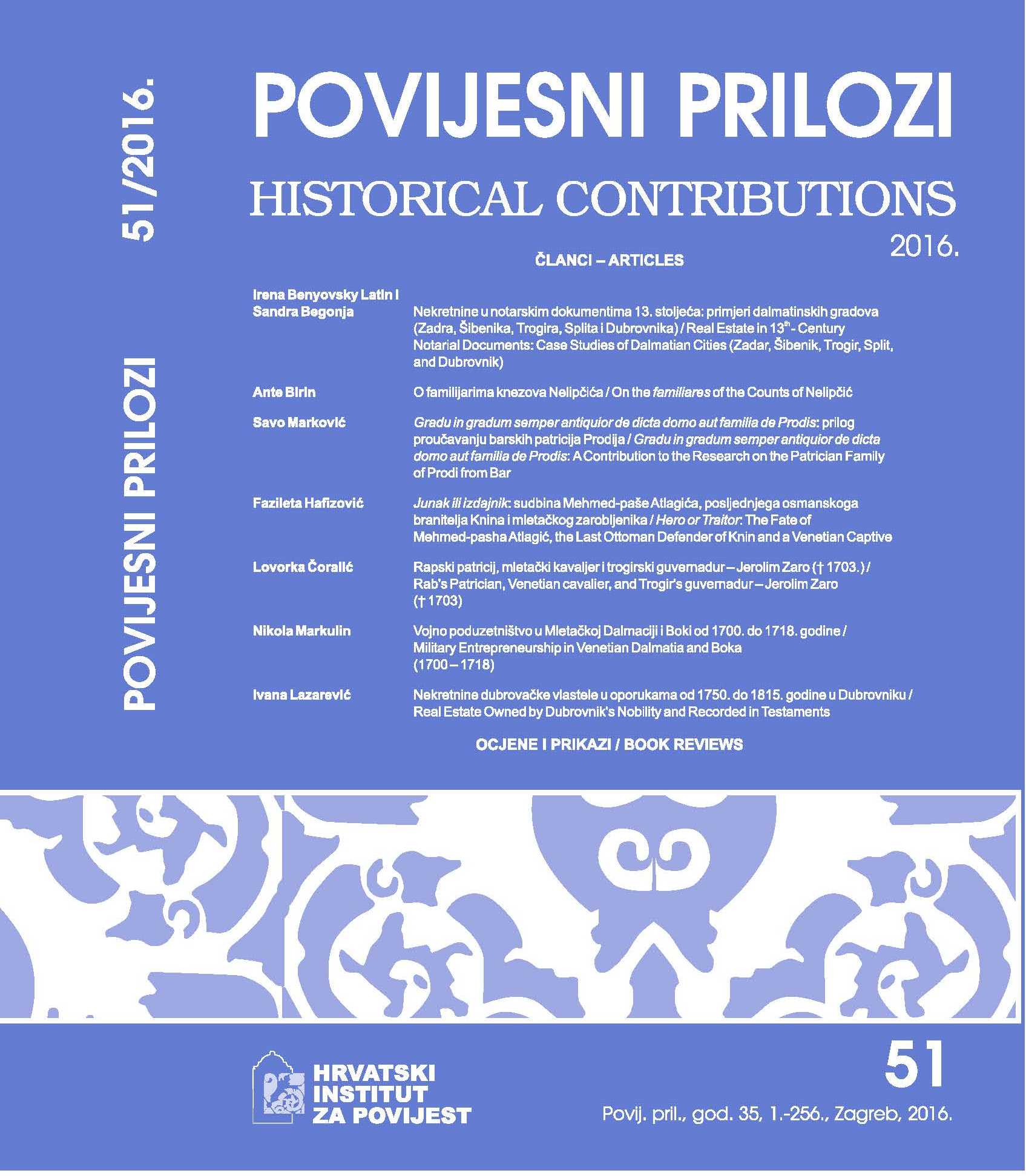Nekretnine u notarskim dokumentima 13. stoljeća: primjeri dalmatinskih gradova (Zadra, Šibenika, Trogira, Splita i Dubrovnika)
Real Estate in 13th-Century Notarial Documents: Case Studies of Dalmatian Cities (Zadar, Šibenik, Trogir, Split, and Dubrovnik)
Author(s): Irena Benyovsky, Sandra BegonjaSubject(s): Architecture, History of Law, Economic history, Rural and urban sociology, 13th to 14th Centuries
Published by: Hrvatski institut za povijest
Keywords: notarial documents; Middle Ages; urban planning; Dalmatian cities;
Summary/Abstract: Notarial documents are an indispensable source for understanding the level of property relations and generally the dynamics of real estate business in a city. Besides legal transactions, they contain the crucial data on the properties themselves, such as size, position, type, and building material. Real estate of greater value and durability was usually described in more detail in the notarial records. These sources also contain numerous details on the topography and place names in a city. When dealing with a particular building or land plot, compilers of the documents defined their position, boundary, and appearance, named their possessors or users, and often described the surrounding properties. Such documents can therefore be used in analysing various discourses concerning space, depending on their purpose and date of writing. Real estate belonged to the category of res, a formula that included information on the type, position in the city (boundaries and neighbours), building material, additional structures, and legal status. In this paper, we have analysed the data preserved in the 13th-century notarial documents of various Dalmatian cities (Zadar, Šibenik, Trogir, Split, and Dubrovnik).
Journal: Povijesni prilozi
- Issue Year: 2016
- Issue No: 51
- Page Range: 7-39
- Page Count: 33
- Language: Croatian

